Safari
Navigator
Experience wilder adventures with Safari Navigator! See more, play live in-park, and make every moment count. Enjoy wildlife sustainably & restoratively on game drives and at home.
NEW Animal Book—scroll down to explore!
SAFARI NAVIGATOR
SAFARI NAVIGATOR
Want greater value and experiences from your park visits?
Eager to explore and see more, but frustrated by wildlife unpredictability, given the time and cost of visits?
We’ve got you covered—discover smarter paths, enjoy wilder experiences, and make your park visits more rewarding and sustainable with Safari Navigator.
Safari Navigator
SAFARI NAVIGATOR
Experience wilder adventures with Safari Navigator! See more, play live in-park, and make every moment count. Enjoy wildlife sustainably & restoratively on game drives and at home.
NEW Animal Book—scroll down to explore!
Safari Navigator
Experience wilder adventures with Safari Navigator! See more, play live in-park, and make every moment count. Enjoy wildlife sustainably & restoratively on game drives and at home.
NEW Animal Book—scroll down to explore!
EXPLORE | DISCOVER | PLAY | LEARN | CONTRIBUTE | VALUE | CONSERVE
Animal Book
App Screens
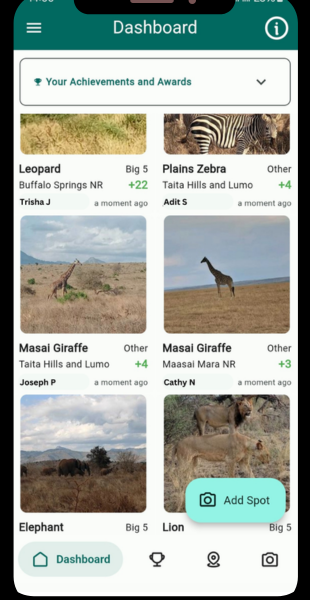
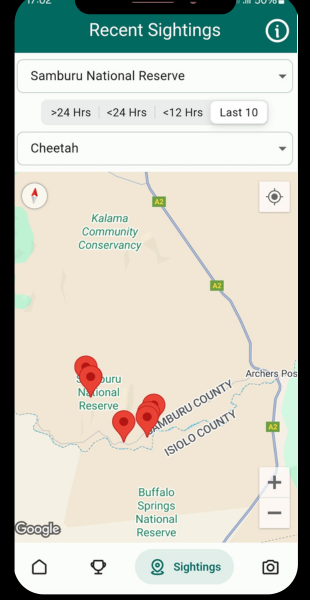


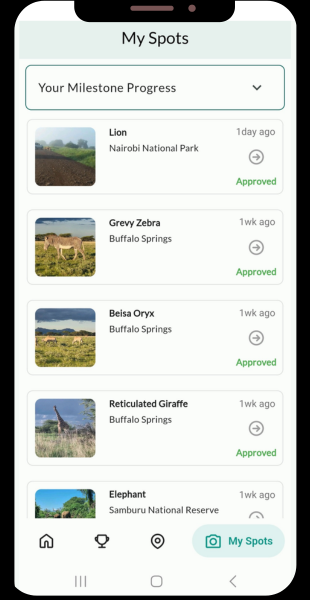
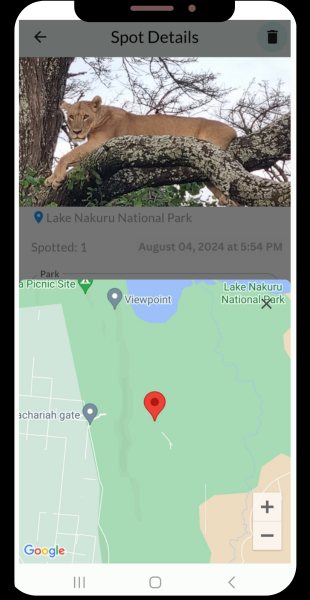
Spotted...
... and lots more!
What the early birds are saying
Enjoyed by the experts - Hundreds of safari drivers and guides. Join them today!
Wilder Experiences
Go anywhere! Broaden your adventures across parks less travelled. Discover wildlife top spots with recent sightings. Enjoy gamified challenges, save and re-live your adventures in your personal gallery.
Greater value for you.
Impactful Experiences
Empower our communities. 30% of income received supports African stakeholders and historically marginalized communities. More adventures support more stakeholders.
Greater value for communities.
Restorative Experiences
Adventure away while preserving and supporting the restoration our natural heritage. Each spot you save contributes to conserving endangered species for future generations. Together, let’s reverse species decline.
Lasting value for generations.
Our Mission
To support wildlife tourism and conservation through enhanced visitor experiences, increased incomes for stakeholders and ownership for communities.
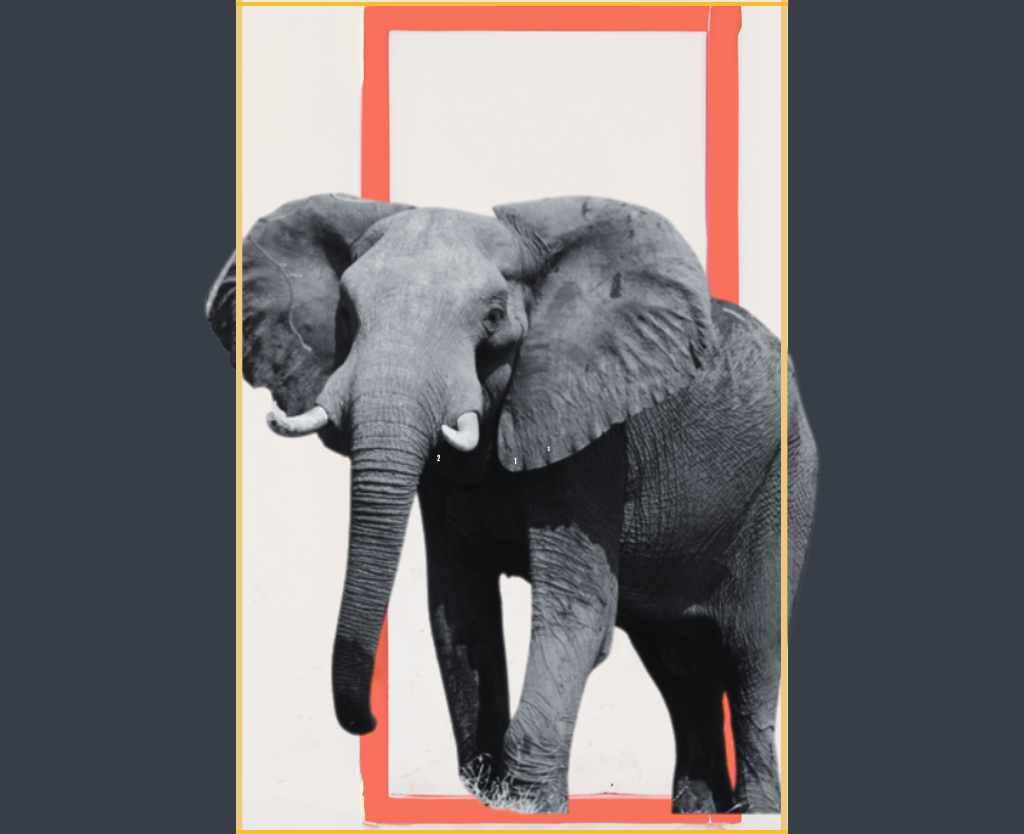
Restoration
Your collection of wildlife encounters is your contribution to restorative tourism; supporting communities and conservation initiatives – watching over our untamed pals!
EXPLORE | DISCOVER | PLAY | LEARN | CONTRIBUTE | VALUE | CONSERVE
Experience more, support our communities and conservation.
What you get
- Club Level: Explore
- Unlimited access in 19+ parks
- ~100 wildlife spots live daily
- Unlock partner offers – flights, accommodation & more
- Personalised spot gallery
- Lifetime access!
- Earn points. Upgrade Club level. Unlock more benefits.
- Experience more. Support communities. Contribute to conservation.

FAQs
What is Safari Navigator?
Safari Navigator enhances your wildlife experiences, helping you explore more parks, discover top wildlife spots with recent sightings, enjoy gamified challenges, and save your adventures—all while supporting communities, conservation and restoration.
How do I get started?
Download the app, sign up, and you’re ready to start exploring.
Is Safari Navigator available in multiple national parks?
Yes, Safari Navigator is available in 18 national parks and reserves, with more to come. You can view the full list within the app.
I didn’t receive my verification email. What should I do?
Refresh your inbox and check your spam folder. If you still don’t see it, contact us for help.
Can I use Safari Navigator offline?
Yes, you can explore and save your adventures offline. Your data will sync automatically when you’re back online.
Why aren’t my spots appearing?
If your spots aren’t showing up, refresh the page. They’ll upload once your internet connection is restored. Don’t worry, keep saving!
How does Safari Navigator support communities and conservation?
Safari Navigator dedicates 30% of its income to local communities, drivers, guides, and conservation. The spots you save help sustain and restore wildlife experiences for future generations.
What are Safari Navigator security features?
Among several other measures, Safari Navigator includes:
- User Verification: All users must be verified.
- Restricted Zones and Species: Access to sensitive areas and at-risk species is limited.
- Controlled Access: Sightings feature is restricted to park hours.
- Real-Time Reporting: Suspicious activities are monitored and can be reported.
- Data Security: Advanced security measures protect your data.
What are my legal obligations regarding wildlife conservation?
By using Safari Navigator, you agree to follow Kenya’s Wildlife Conservation and Management Act. Poaching and other violations may lead to severe penalties, including the death penalty. Safari Navigator will report any suspicious or illegal activities to the authorities.
How does Safari Navigator address overcrowding?
Safari Navigator helps reduce overcrowding by spreading visitor interest across multiple sightings and parks, rather than concentrating everyone in a single location. Additionally, the platform will:
- Limit the Display of Sightings: Restrict visibility of certain sightings to prevent overcrowding in specific areas.
- Support Park Management: Share real-time sightings information with park authorities to help rangers and patrols manage visitor traffic flow and enforce viewing regulations
How do I participate in gamified challenges?
Gamified challenges are built into the app. Save spots during your visits to earn points, badges and exciting rewards with our partners.

Email Us
Visit Us
www.safari-navigator.club







